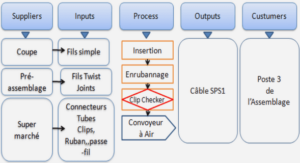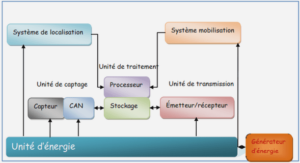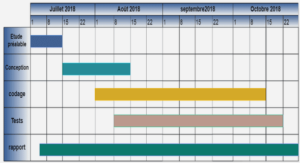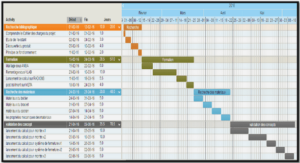LES CAROTENOÏDES
Materials and Methods
Growing conditions and sample preparation
Cultivars have been selected from various collections made during T ANSAO (TAro N etwork for South Asia and Oceania), SPYN (South Pacifie Yams Network), and RCAPV (Root Crops Agrobiodiversity Project in Vanuatu) projects, as well as from hybrid lines developed at the Vanuatu Agricultural Research and Technical Centre (V ARTC, Espiritu Santo). All accessions are presently maintained in the national germplasm collection. All varieties were grown within the same plot (V ARTC, Espiritu Santo, 1 5 °23’S 1 66°5 1 ‘E) to minirnize variations due to environmental factors. They were planted at the same time and their storage organs harvested when fully mature to avoid variation due to ontogeny. A core-sample of 1 53 accessions was assembled to represent the full range of the phenotypic flesh co lor variation of the storage organs ( corms, cormels, roots, tubers). Overall, roots of 33 !. balatas cultivars (cvs), tubery roots of 22 M esculenta cvs, tubers of 20 D. alata cvs, tubers of 14 D. bulbifera cvs, aerial tubers (bulbils) of 13 D. bulbifera cvs, tubers of 10 D. esculenta cvs, tubers of 4 D. cayenensis cvs, tubers of 3 D. pentaphylla cvs, corms of 24 C. esculenta cvs, cormels of 7 X sagittifolium cvs and corms of 3 A. macrorrhiza cvs were selected. Passport data characterizing each accession are presented in Table 1.
The storage organs were washed, peeled under water and their surface quickly dried on a towel. Roots were eut longitudinally and then transversally in two equal parts of about 200 g of fresh weight (FW). Material was grated using a cheese grater. Half was sealed in zip-lock plastic bags and stored at -20°C overnight. Frozen material was freeze-dried with a TELSTAR Cryodos -50 (Terrassa, Spain) for two days. Dried material was kept in paper bags enclosed in black polyethylene sealed bags at -20°C until analyzed. Every step of the procedure took place in a dark room to prevent photo-oxidation. The moi sture content of the samples was determined on the other half of the sam ple (1 00 g) by drying it in a ventilated oven at 60°C until constant weight (about seven days).
Reagents and standards
Acetone, methanol and hydrochloric acid were purchased from VWR Int. (Fontenay-Sous-Bois, France). Tert-butyl-methyl ether, ammonium acetate, sodium hydroxide, anhydrous sodium sulphate, ethyl acetate and trishydroxyméthylaminométhane (Tris) were purchased from Sigma Aldrich Co. ( St. Louis, MO, USA). Ethyl ether was purchased from Cooper (Melun, France), and chloroform from SDS (Peypin, France). All-trans-j3-carotene and lutein were obtained from Carotenature GmbH (Lupsingen, Switzerland) and lycopene, from Sigma-Aldrich Co. (St. Louis, MO). b-carotene, e-carotene, neurosporene, phytoene and zeaxanthin, were obtained from Escherichia Coli harbouring the plasmids pAC-DELTA, pAC-EPSILON, pAC-NEUR, pAC-PHYT and pAC-ZEAX kindly provided by Dr F.X. Cunningham Jr. (University of Maryland, USA). Carotenoids were extracted from bacteria cultures using ethyl ether. a-carotene was extracted from carrots (Daucus carola L.) as described in section 2.3.
Extraction methods
The extraction method was adapted from the procedure described by Rodriguez-Amaya and Kimura (2000). For each step of the protocols, samples have been kept away from light and maintained at 4°C. A 2 -4 g freeze-dried powder sample was homogenized in 10 mL acetone using a polytron Biotrona 6403 (Küssnacht, Switzerland). To ensure full recovery of analytes, knifes were rinsed with 5 mL of acetone then the 5 mL pooled with the fust 1 0 mL. The sedimentation of the powder was achieved by centrifugation at 4 oc on 3000 g for 10 min. Supematant was recovered with Pasteur pipette and the extraction process was repeated on pellets. In order to guarantee optimal extraction conditions, the process was establish on highconcentrated samples for each species using High-Performance Liquid Chromatography – Diode Array Detector (HPLC-DAD). The optimization of the process was follow by setting the DAD at 460 and 290 nm – for colored and non-colored carotenoids. Generally two to four times were needed to ensure better extraction. Each extract was evaporated to dryness under a . nitrogen stream.
Saponification was adapted from the procedure described by Pérez-Galvez MinguezMosquera (200 1 ). Only D. alata, D. bulbifera, D. pentaphylla and D. cayenensis samples were saponified, because saponification did not modify the chromatographie profiles of the other species. After carotenoid extraction, the dried residue was dissolved in 1 mL of acetone. The solution was placed in a glass tube before adding 3 mL of ethyl ether and 4 mL of 1 0% (w/v) sodium chloride in water. The tube was vigorously shaken to transfer pigments to the organic phase. The process was repeated once. The organic phases were recovered with Pa steur pipette, and poo1ed. One mL of 1 0% KOH in methanol was added to the solution and stirred. The saponification took place at room temperature in the dark for 1 h. Afterwards, 4 mL of 1 0% (w/v) sodium chloride in water were added, the tube was vigorousl y stirred and phase separation was accelerated by centrifugation at 4°C, 3000 g, for 1 min. The aqueous phase was discarded and the organic phase washed severa! times with distilled water. The neutra! organic phase was evaporated to dryness under nitrogen stream. The extracts were then dissolved in an adequate volume of ethy1 acetate and filtered on a 0.45 ,um PTFE filter (C.I.L., Sainte-Foy-La-Grande, France) prior to injection. a-carotene standard is not stable during transport. It was therefore extracted from fresh carrots (Daucus carola L.) purchased from a local market in France. It was difficult to follow the acetone-based extraction procedure used for freeze-dried sample because of the high moisture content of fresh carrots. The methanol-based protocol described by Fraser et al. (2000) was thus used on 2 g of FW.
Analytical methods
Carotenoids were analyzed by HPLC-DAD using the method described by Fraser et al. (2000) with modifications. Extracts were separated on a Spectra system (Thermo Finnigan) equipped with a reverse-phase C30 colurnn YMC Inc. (Europe GmbH, Germany), 5 ,um, 4.6 x 250 mm. The mobile phases were methanol as eluent A, methanol/ammonium acetate 1% in water (5 : 1, v:v) as eluent B and tert-butyl-methyl ether as eluent C. The inj ection volume was 50 ,uL, the flow rate was fixed at 1 mL.min-1 and the column temperature was set at 25°C. The gradient program was performed as follows: initial conditions 0-12 min Chromeleon software v.6.60 (Dionex Co., Sunnyvale, USA). Quantification was achieved by externat calibration curbs made of five carotenoid standard concentrations injected in triplicate. Concentrations were calculated using molar extinction coefficient according to published spectral data (Davies, 1 976). Correlation coefficients were between 0.993 and 0.999. When standards were unavailable, they were expressed in all-trans-J3-carotene or lutein equivalent. An extemal standard of astaxanthin were injected daily to monitor repeatability of the HPLC analytical separation through changes in retention ti me and repeatability of the detection through peak area.
Determination of peak purity
For quantification, purity of carotenoid standards was determined by HPLC-DAD and assured being over 90 % for each standard (Rodriguez-Amaya & Kimura, 2004). Every peak was checked for displaying the same characteristic spectrum at the ascending and descending slopes and at the maximum.
Data analysis
Provitamin A content was estimated by ad ding the amounts of all-trans-j3-carotene, 13 -cis-/3- carotene and 9-cis-J3-carotene for each cultivar. Retinol Activity Equivalent (RAE) was calculated by dividing provitamin A content by 12. For specifie data sets, coefficients of variation of the mean (CV%) were calculated to provide a normalized estimate of the dispersion of a probability distribution. Relationship between the greater carotenoid and visual determined flesh color code was estimated by calculating Pearson correlation coefficients. Significance was determined using Student’s t-test.
Color assessment
A color code ranging from 1 to 7 was attributed to eacb storage organ at harvest. Colors were assessed visually. The flesb color code was attributed as follow: 1 = white, 2 = yellow, 3 = orange, 4 = pink, 5 = red, 6 = red violet, 7 = purple, g = green, severa! figures mean the presence of severa! co lors, e.g. : 2g7 = yellow-green-purple.
Results
Reliability of the carotenoid profùe assessment protocol
Figure 1 A shows a poorly resolved chromatographie profile of D. bulbifera (Db 620) like those exhibited by a few species. The presence of carotenoids esters was expected and a saponification step was added after extraction for sucb samples. After processing saponification, the chromatographie profi le of the same D. bulbifera sample was improved (see Figure l B). Only D. alata, D. bulbifera, D. pentaphylla and D. cayenensis samples were saponified, because saponification did not modify the chromatographie profiles of the other species. Regarding on non-colored carotenoids, no change in chromatographie profiles was observed at 290 nm. Ipomoea batatas extracts were the most colored ones. A mid-colored accession (lb 1 80) of this species was thus chosen to estimate the reliability of our protocol for assessing carotenoid profiles. The two greater carotenoids of this cultivar were specifically observed. One was alltrans-j3-carotene and the nature of the other one, which displayed a retention time of 25. 1 mm and four À.ma x at 267, 422(SH), 446 and 473 nm, could not be determined.
Since the samples collected for analysis were only a fraction of a total root, we first estimated the variation in carotenoid content along a given storage organ by comparing the carotenoid content of ten different extractions of flesh collected in separate parts of this tuber (see Table 2). Contents in all-trans-,8-carotene and in the unknown substance displayed a CV% of 3 .5% and 3 .6% respectively. These values are small and in the range of those observed while comparing several extracts made on the same dry tuber powder. CV%s of the data obtained on the ex tracts made on three tubers of the same plant were also in the same range, i.e. , 4.2% for all-trans-,8-carotene and 3.5% for the unidentified substance. They were similar to the data obtained on tubers col lected from ten separate plants belonging to the same clone (4.5% for all-trans-,8-carotene and 3 .2% for the unidentified substance).
A similar method of estimating the variability of our measurements was applied to a representative member of each species of our core-sample ( chemotypes are described below in section 3 .2). CV%s were calculated on the carotenoid profiles obtained on three different extracts (see Table 3). Again, relative standard deviations were less than 3 .4% on any given carotenoid in any class of chemotype. It is thus observed that the contents of individual carotenoids found in different parts of the same root, or in different roots of the same plant, or in different roots of different plants of the same clone, are similar (within analytical error) and that any of these values gives a reasonable estimate of an accession carotenoid content and composition within our set of sample species (see Tables 2 and 3 ).
Characterization of different chemotypes
Assessment of the carotenoid profiles of 1 53 accessions allowed grouping them into ten different categories, i.e., ten different blends of carotenoids or chemotypes. A chromatogram monitored at 460 nm of one sample of one typical member of each group is shown in Figure 2. Chemotype groups clearly reflected species boundaries, each chemotype being specifie of one species. Ipomoea balatas (see Figure 2A) had the simplest chemotype with all-trans-,8-carotene making more than 80% of the detected compounds. Manhiot esculenta (see Figure 2B) and C. esculenta (see Figure 2C) extracts, displayed three major peaks including all-trans-,8-carotene and two unknown substances and contained minor quantities of lutein. The relative abundance of these substances varied between cultivars. Based on their retention times (27.5 and 31.9 min) and a comparison of their spectral characteristics with those published by Rodriguez-Amaya and Kimura (2000), the two unknown substances are proposed to be cis-isomers of ,8-carotene, 1 3 – cis-,8-carotene and 9-cis-,8-carotene.
The lutein, the two czs-Isomers and the all-trans-isomer of /3-carotene also made the carotenoid blend detected in A. macrorrhiza (see Figure 2E) except that in this species, lutein was the most abundant substance and all-trans-/3-carotene as well as 9-cis-/3-carotene were barely detectable in corm whose flesh was beige at best. Similar profiles with a greater peak of lutein were observed in X sagittifolium (see Figure 2D), however /3-carotene isomers could not be detected. Dioscorea species (see Figure 2F-2J) accumulated the greatest diversity of carotenoid substances. Nine maj or carotenoids were found in D. bulbifera (see Figure 2G) including lutein, a11-trans-f3-carotene and neurosporene. Four unknown peaks with lower retention times were thought to be other xanthophylls and were the major carotenoids of D. cayenensis (see Figure 21). The highest peak of D. bulbifera extract was a rnix of two unseparated and unidentified compounds. Al1-trans-f3-carotene and lutein constituted major peaks among six other unidentified substances of D. esculenta (see Figure 2H) extracts. In D. alata (see Figure 2F), profiles showed seven maj or peaks including lutein, all-trans-/3-carotene and zeaxanthin. Finally, the poorly colored D. pentaphylfa (see Figure 21) displayed eight maj or peaks including lutein, all-trans-/3-carotene and neurosporene.
Inter- and intra-specific variation in carotenoid contents
Even though accessions belonging to a similar species bad a sirnilar blend of carotenoids, they differed greatly in the level of accumulation of these substances. When a standard was avail able, substance concentrations were estimated with an externat standard curve. Otherwise, unidentified xanthophylls concentrations were expressed in lutein equivalents and /3-carotene isomers in alltrans-/3-carotene equivalents (see Table 4). The richest source of all-trans-/3-carotene was 1. balatas, particularly the orange fleshed cultivars. Manihot esculenta featured considerable all-trans-/3-carotene content too, followed by C. esculenta. Very low levels were found in yams (tubers of D. alata, D. esculenta, D. cayenensis, D. pentaphylla and bulbils of D. bulbifera), and A. macrorrhiza, whereas all-trans-/3- carotene was not detected in X sagittifolium. Lutein content was found to be relatively low in D. bulbifera (tubers as well as in bulbils) though higher than in the other studied species for which it was barely detectable and could not be quanti fied. Finally, no lutein was detected in 1. balatas and D. pentaphylla.
The non-colored carotenoid phytoene was present at very high concentration in one hybrid of M esculenta (Hyb3 1) and at even lower concentrations in the other cultivars of M esculenta and D. bulbifera tubers and bulbils. Dioscorea pentaphylla exhibited weak concentrations, wbereas 1. balatas and D. alata bad phytoene contents that were below quantification lirnits. Another non-colored carotenoid, neurosporene, was only featured in small amount in D. bulbifera tubers and as traces in D. pentaphylfa and D. bulbifera bulbils. Traces to weak concentrations of zeaxanthin were only displayed in X sagittifolium, A. macrorrhiza and in every yam excluding D. pentaphylla. Only M esculenta and C. By comparison with a carrot extract carotenoid profile and with published spectra, acarotene was estimated to have a retention time of 28.6 min. Contrary to the study of Lako et al. (2007), data presented in Table 4 show that sorne cultivars of each yam species contain traces of a-carotene. Unknown xanthophylls were found in almost every cultivar of D. alata, in tubers and bulbils of D. bulbifera and in D.
Potential for reaching recom mended daily intake in vitamin A
Recommended daily intakes in vitamin A range from 400 to 900 ,ug/day, respectively for children between 0-4 years and for adults. Values of vitamin A equivalent are presented in Table 4 and give information on quantity offresh weight required to reach recommended daily intake.
Reliability of chemotypes visual determination
In arder to assess the possibility of transferring the knowledge gained on carotenoid profiling to breeders and local farmers who practice visual selection on their root crops genotypes, relationships between visually determined flesh color and content in the greater carotenoid was determined. Figure 3 reveals a good correlation between flesh color code and the logarithm of the all-trans-,8-carotene content in 1. batatas. The high correlation coefficient (0.97 with a significance of P<O.OO l) indicates the reliability of chemotypes visual determination. Because anthocyanin contents can hide visual determination of carotenoids color, red to purple genotypes could not be incorporated in this assessment.
Discussion
The results presented in this study are exploratory in nature. All-trans-fJ-carotene is the best known and most abundant provitamin A carotenoid and several studies have provided estimates of its content in several plant species. Reports of 1. balatas being a good source of all-trans-/3- carotene have lead to its commercial exploitation. Previously reported fJ-carotene content maxima are relatively similar to those measured in the present work ( 1 2.8 mg/1 00 g FW compared to 8.8 mg/100 g FW in K’osambo, 1 998 and 15 mg/100 g FW in Lako et al. , 2007) but lower than those found by Takahata et al. ( 1 993) and Teow et al. (2007), 22.6 mg/1 00 g FW or 26.5 mg/1 00 g FW respectively. Differences in content could be explained by the different genotypes and environment, as well as the extraction procedures.
|
Table des matières
PREMIER CHAPITRE : INTRODUCTION GENERALE
1. L’amélioration génétique des plantes à racines et tubercules tropicales : objectifs et stratégies
1 . 1 Les enjeux pour les pays du Sud
1 .2 Des plantes diverses à caractéristiques commune
2. Le contexte de la thèse
2. 1 L’agrobiodiversité au Vanouatou
2.2 Le cadre du projet au Vanouatou
2.3 Objet et déroulement du travail
3. Bref rappel des contraintes liées à l’amélioration génétique des plantes à racines et tubercules tropicales
Les objectifs de la sélection
Le cadre de l’amélioration
DEUXlEME CHAPITRE : LES COMPOSES MAJEURS
1. De la variabilité des chimiotypes aux différents usages
1.1 La variabilité des teneurs et compositions en composés majeurs
1 .2 Les contraintes liées à l’amélioration génétique des composés majeurs
1 .3 Les exigences liées aux préparations culinaires
L’élimination des facteurs anti-nutritionnels
Les caractéristiques recherchées par le consommateur
Les composantes de la texture et leur évaluation
2. Mise en évidence d’opportunités pour l’amélioration
TROISIEME CHAPITRE : LES CAROTENOÏDES
1. Des enjeux considérables
1.1 Présentation
1 .2 Intérêts nutritionnels
1 .3 Des enjeux internationaux
1 .4 Les contraintes liées à l’amélioration génétique des RT
1.5 Autres facteurs affectant les compositions
1.6 Les contraintes liées aux objectifs des programmes actuels
2. Mise en évidence d’opportunités pour la biofortification
QUATRIEME CHAPITRE : LES COMPOSES PHENOLIQUES
1. Un intérêt toujours croissant
1.1 Présentation des composés phénoliques
1 .2 Intérêts pour les plantes et l’Homme
1 .3 Valorisation de l’agrobiodiversité et applications commerciales
1.4 Les composantes de la variabilité
1.5 Les déterminants environnementaux et génétiques
2. Exploration interspécifique des RT
CINQUIEME CHAPITRE : LA BIOFORTIFICATION
Evaluation du potentiel d’amélioration génétique des c himiotypes de taro et
de patate douce
SIXIEME CHAPITRE : DISCUSSION, CONCLUSION GENERALE ET PERSPECTIVES
1. Récapitulatif des résultats acquis et des avancées réalisées
1.1 Composés majeurs
1 .2 Caroténoïdes
1 .3 Composés phénoliques
2. Evolution, domestication et sélection traditionnelle des chimiotypes
2. 1 L’évolution naturelle des chimiotypes
2.2 L’adéquation entre chimiotypes et usages
2.3 La sélection de chimiotype
3. L’amélioration génétique des chimiotypes, nouvelles méthodologies et nouveaux outils
4. Conclusions et Perspectives
REFERENCES BIBLIOGRAPHIQUES
ANNEXES
![]() Télécharger le rapport complet
Télécharger le rapport complet






